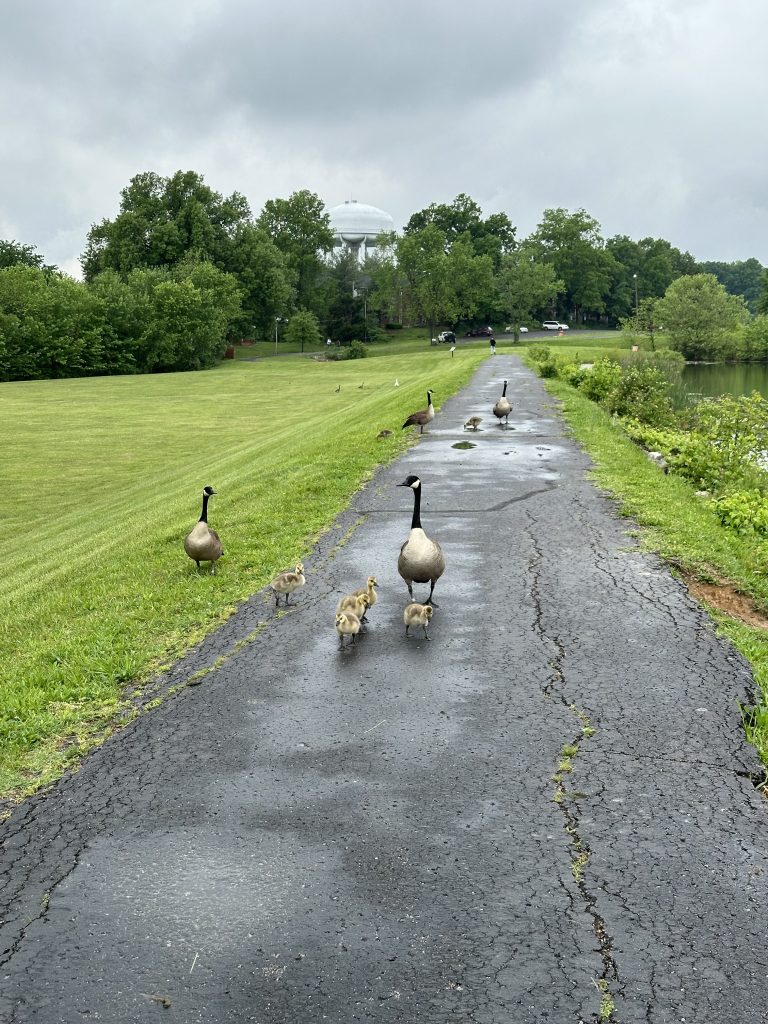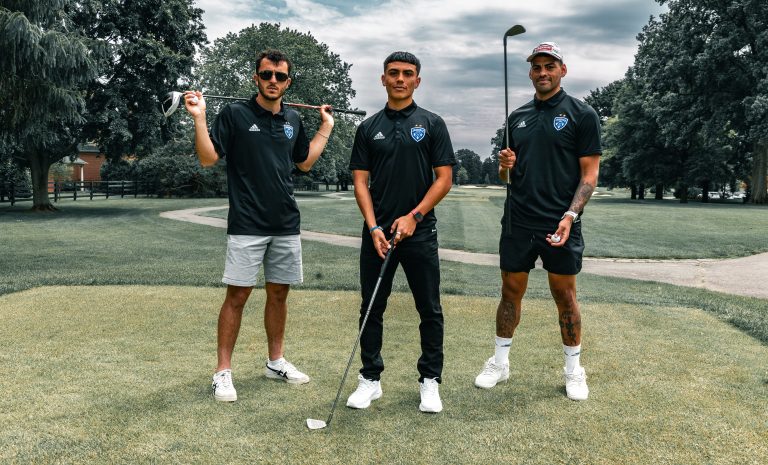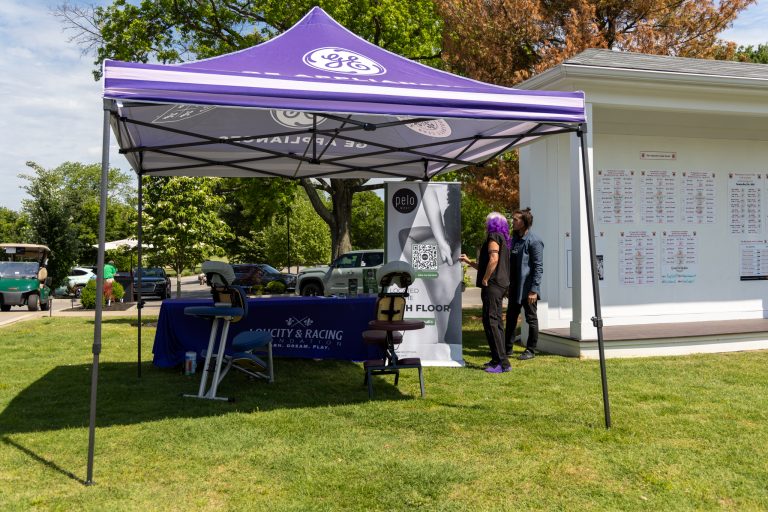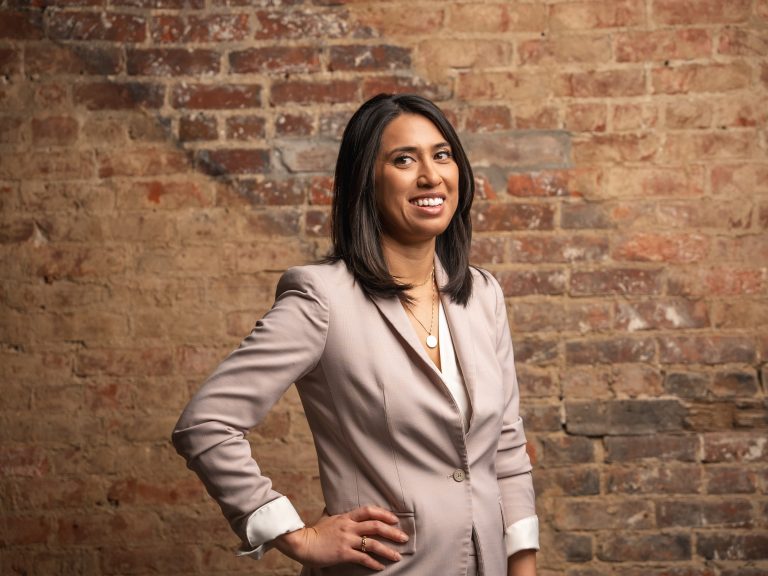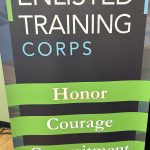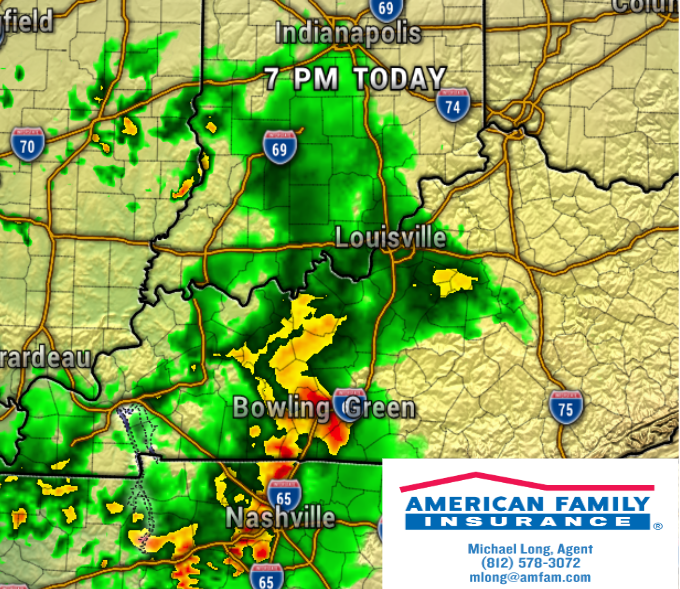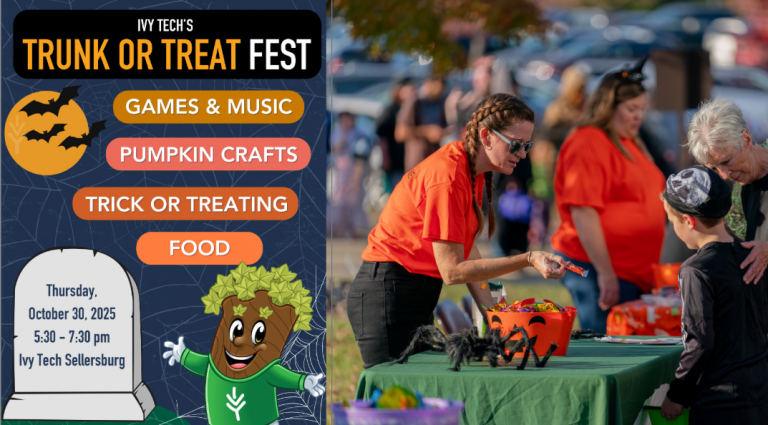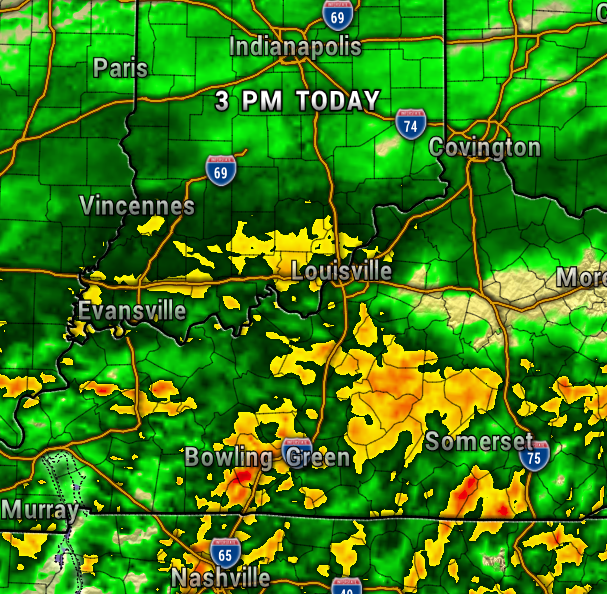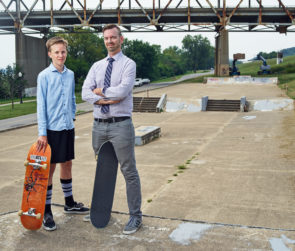
 The Carnegie Center for Art and History sees a new skatepark as an important element to public art in the city’s riverfront.
The Carnegie Center for Art and History sees a new skatepark as an important element to public art in the city’s riverfront.
BY STEVE KAUFMAN | PHOTOS BY DANNY ALEXANDER
How many people look at a skatepark and see art?
Daniel Pfalzgraf does.
Fortunately for the city of New Albany, Pfalzgraf is curator of the Carnegie Center for Art and History on West Spring Street. The building is a piece of both art and history itself, designed and built in 1904 as the old Carnegie Library by noted architect Arthur Loomis for Gilded Age industrialist Andrew Carnegie.
When the library was moved into newer headquarters in 1969, the old building was turned into the Floyd County Museum. It was given its current name in the 1990s to better reflect its history. 
The center is dedicated to preserving and appreciating local history and local artists. Its two permanent exhibitions are about the Underground Railroad, a slaves’ passageway to freedom across the Ohio River and into the North, and about Lucy Higgs Nichols, an escaped slave from Tennessee who joined the Indiana 23rd Infantry during the Civil War as a nurse, and then came to live the rest of her life in New Albany.
But Pfalzgraf and the center’s staff also host a number of rotating art exhibits, mostly highlighting contemporary art. The two exhibits this year were #BlackArtMatters, featuring 10 different contemporary African-American artists, and Pulp Art, featuring work influenced by comic books and cartoons.
This summer, the center is hosting probably its biggest event – the annual “2017 Form, Not Function: Quilt Art at the Carnegie,” an annual, juried exhibition of contemporary art quilts art from all over the country, which Pflazgraf said is one of the premiere exhibitions of contemporary art quilts in the nation.
This year, there are 284 quilts in the show, which is expected to attract about 1,500 to 2,000 visitors before it closes on Sept. 16, 2017.
The center, with its magnificent old building and its efforts on behalf of both history and art, is one of New Albany’s real treasures.
But what does this all have to do with skateboarding?
The center has been staging an annual New Albany Public Art Project since 2010 “to get public art into the New Albany downtown community,” said Pfalzgraf, “and to promote interaction with artwork and public spaces outside our museum’s walls.”
For the first seven years, the center would solicit local artists to create a piece of work somewhere downtown to stay up for two years as an integrated part of the city’s business and entertainment district.
“When I came here two-and-a-half years ago,” said Pfalzgraf, “our director, Sally Newkirk, asked me to reimagine this public arts project, to see what new directions we might take it in.”
Pfalzgraf said his approach to art exhibits in general is having popular points of reference for people to engage. Thus, the comic book theme of the Pulp Art exhibit. “Everybody relates to comic books,” he said. “I think it breaks down the barriers of people’s emotional interaction with art, which they often feel they don’t understand.”
For the public arts project, he was interested in playing up a physical engagement with the artwork – “not,” he said, “just something you sit and view passively. Rather, something you can actually get into the middle of; something that hits all cylinders going on in your brain.”
The cylinders in his brain were hit one day while walking around New Albany looking for ideas. “I saw the skatepark down by the riverfront and a lightbulb went off.”
A skater growing up and the father of an avid 13-year-old skater, he knows how skateboarders – and BMXers, inline skaters, razor scooter riders, etc. – think about spaces.
“It’s a creative thought process,” he said. “They see curves, forms, shapes of concrete differently than most people see them. They think automatically of geometric lines and how they can utilize these forms and features. It’s a completely three-dimensional approach: forward, backward, up, down, left, right. And they’re always looking for creative ways to adapt and change their bodies and the flow of their direction within the flow of their environment.”
But the current park sadly falls short of satisfying all that creativity. It’s 20 or more years old and, said Pfalzgraf, “the features were never done correctly. It was always difficult to use, even when new. There are seams in the concrete and angles that don’t make sense. And now age is wearing it down.”
The parent of a skater, Pfalzgraf feels it would be utilized more by New Albany’s youths with better-constructed features. And the museum curator sees it as “a skateable work of public art” in a key part of the city – on the waterfront, next to the amphitheater.
“Internally, we’ve been calling it the Public Art Skatepark,” Pfalzgraf said, “but another possibility is the New Albany Flow Park because it runs along the flow of the Ohio River, which echoes the flow of the skaters.”
It would also be a haven for biking, hiking, dog walking and children running around.
The goal is to raise $300,000, which the Center hopes to accomplish with two events this fall. One is to raise money; the other is to raise awareness.
“I think the whole thing is difficult for some people to wrap their heads around,” Pfalzgraf said. “They may see it as just another playground. But we have some preliminary sketches, which we’ll release to the public soon. And I think that might inspire some of those people.”
One who is already inspired is New Albany Mayor Jeff Gahan, “who absolutely loves the idea and is behind it 100 percent,” said Pfalzgraf. “In fact, we found out that the city had plans to demolish the park because it’s in such disrepair and gets so little use. But after the mayor saw our drawings and renderings, he cancelled those plans.”
There’s a major redevelopment of the riverfront in the works, spurred by a $5 million award from Horseshoe Casino. “The plan is for boat docks, riverfront restaurant and some upscale camping sites,” said Pfalzgraf. “To include the skatepark as part of that says a lot about their trust in us and our ability to create something special.”
A Taste for Art and History
The Carnegie Center for Art and History will hold a major fundraising event for its 2017 public art project, the skatepark along the river in downtown New Albany.
The event will be held Sept. 8 at 6 p.m. at the Calumet Club, 1614 E. Spring St. in New Albany. It will include food, wine and bourbon tastes, as well as silent and live auctions and raffles.
Tickets are $65 for members of the center, $75 for non-members. They can be purchased at 812.944.7336 or through a link on the center’s web site, www.carnegiecenter.org/taste.
#IamPublicArt
This year’s 2017 #IamPublicArt event will be the Carnegie Center’s opportunity to call attention to its planned new public art project, a new and much-improved skatepark on the New Albany riverfront.
The event will be on Sept. 23 from 6 to 10 p.m. at the New Albany Riverfront Amphitheater.
It will include three pop-up art installations created by teams of professors and students from Indiana University Southeast, Bellarmine University and Kentucky College of Art + Design.
There will also be a musical program put together by Louisville artist Jecorey “1200” Arthur and headed by the National Endowment for the Arts Jazz Master (and New Albany resident) Jamey Aebersold.

And there will be food and drink available from local vendors.
The event is free and open to the public. But a free fundraiser?
“We’re hoping to build awareness for the project,” said Daniel Pfalzgraf, curator for the Carnegie Center. “Especially because this year’s event will be in the amphiteater right in that area, right next door to the skatepark.”









